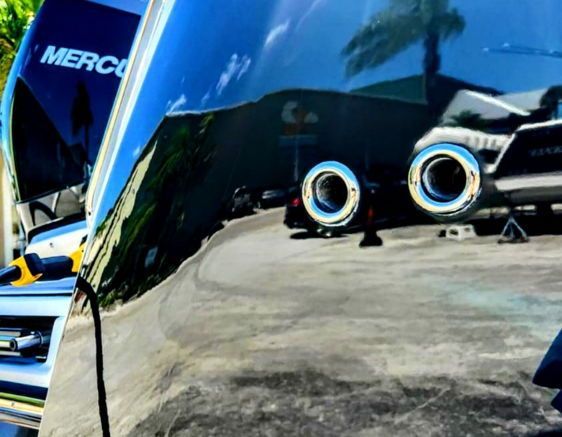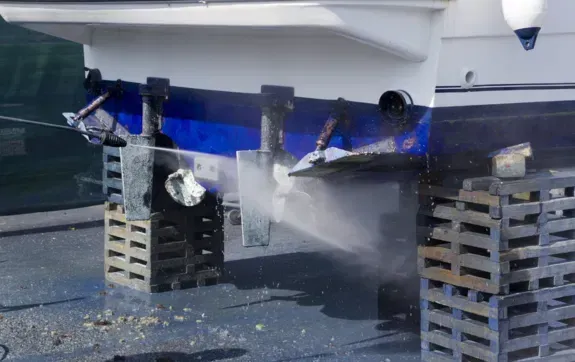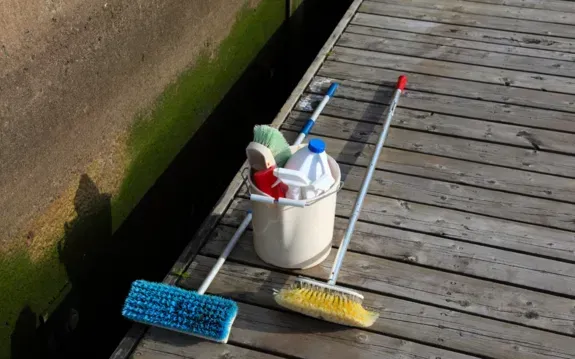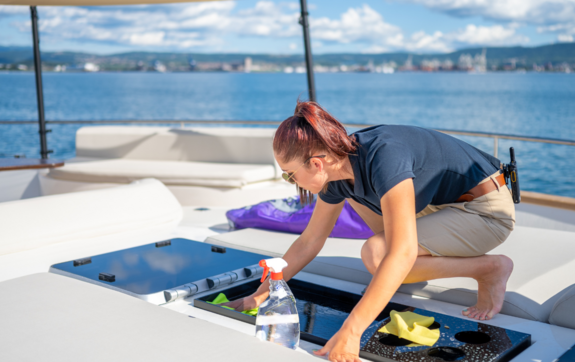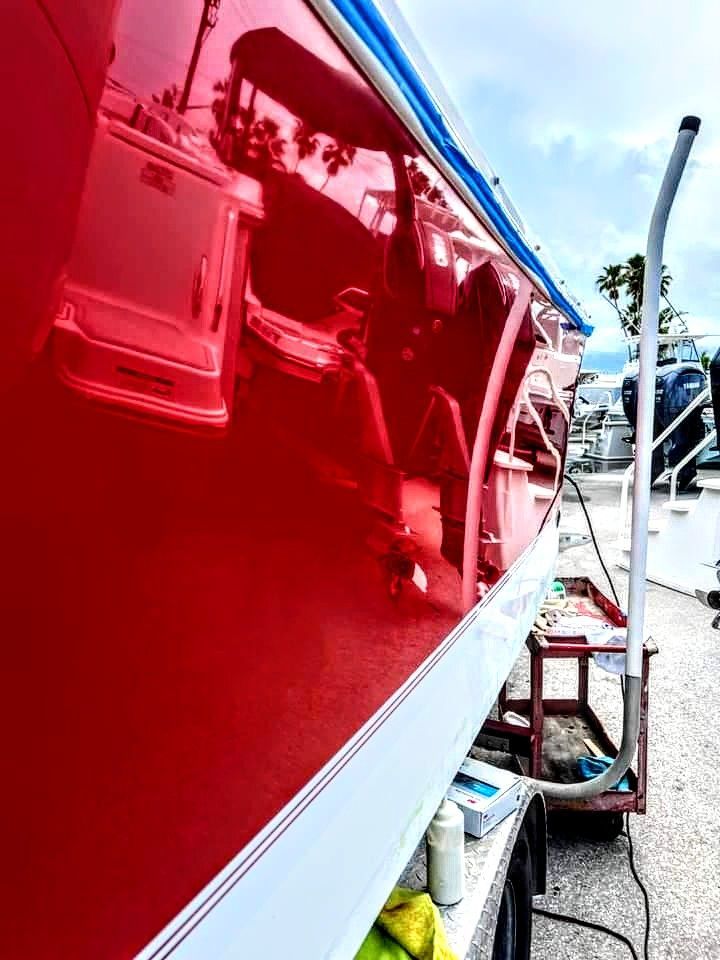To Wet Sand or not?
Maintaining your boat’s appearance is about more than just aesthetics—it’s also essential for preserving the integrity of your vessel’s surfaces. Over time, exposure to the elements can lead to oxidation, scratches, and other imperfections in your boat's gel coat. When it comes to restoring your boat’s finish, two common techniques are wet sanding and compounding. But how do you know which method is right for your boat? In this article, we’ll break down when you should wet sand and when compounding might be the better option, with insights from the experts at Treasure Coast Boat and Yacht Detailing.
What Is Wet Sanding?
Wet sanding is a technique used to remove severe oxidation, deep scratches, and other significant imperfections from your boat’s gel coat. It involves using sandpaper that’s kept wet during the process, which helps to smooth out the surface without causing additional damage. Wet sanding is a more aggressive method compared to compounding, and it’s typically used as a last resort when compounding alone isn’t enough to restore the surface.
When Should You Wet Sand?
Wet sanding is necessary in the following situations:
- Severe Oxidation: If your boat’s gel coat has become heavily oxidized and has lost its shine completely, wet sanding can help remove the top layer of oxidation and restore the underlying surface.
- Deep Scratches: Wet sanding is effective for removing deep scratches that penetrate the gel coat. If you can feel the scratch with your fingernail, wet sanding might be required to smooth it out.
- Faded Gel Coat: Over time, exposure to UV rays can cause your boat’s gel coat to fade and chalk. Wet sanding can help restore the original color and shine by removing the damaged layer of gel coat.
- Heavy Stains: Stubborn stains that have penetrated the gel coat may require wet sanding to remove them completely. This is especially true for stains caused by rust, algae, or other contaminants that have been left untreated for an extended period.
What Is Compounding?
Compounding is a less aggressive method that uses a compound (a type of abrasive polish) to remove oxidation, light scratches, and other surface imperfections. Unlike wet sanding, compounding is designed to smooth and polish the gel coat without removing too much material, making it a safer option for minor to moderate imperfections.
When Should You Use a Compound?
Compounding is ideal for the following situations:
- Light to Moderate Oxidation: If your boat’s gel coat is showing signs of oxidation but hasn’t lost its shine completely, compounding can remove the oxidation and restore the surface’s gloss.
- Minor Scratches: For light scratches that aren’t deep enough to catch your fingernail, compounding is usually sufficient to polish them out and restore a smooth finish.
- Dull Finish: If your boat’s finish has become dull over time but isn’t severely damaged, compounding can help bring back the shine without the need for wet sanding.
- Routine Maintenance: Compounding is also a great option for regular maintenance to keep your boat’s gel coat looking its best. It’s less invasive than wet sanding, so it can be done more frequently without risking damage to the gel coat.
How Treasure Coast Boat and Yacht Detailing Can Help
Deciding whether to wet sand or compound your boat can be tricky, and using the wrong method can potentially cause more harm than good. That’s where the experts at Treasure Coast Boat and Yacht Detailing come in. With years of experience in marine detailing, our team can assess the condition of your boat’s gel coat and recommend the best course of action.
- Expert Assessment: We’ll evaluate the extent of oxidation, scratches, and other imperfections to determine whether wet sanding, compounding, or a combination of both is needed.
- Professional Execution: Our skilled technicians use high-quality products and precise techniques to ensure your boat’s gel coat is restored to its original beauty without causing unnecessary damage.
- Customized Solutions: Every boat is different, and we tailor our services to meet the specific needs of your vessel, ensuring the best possible results.
At Treasure Coast Boat and Yacht Detailing, we take pride in helping boat owners protect and preserve their investment. Whether your boat needs a light compound polish or a more intensive wet sanding treatment, we’re here to help.
Final Thoughts
Understanding when to wet sand your boat and when to use a compound can make a significant difference in the outcome of your detailing efforts. Wet sanding is the best option for severe oxidation, deep scratches, and heavy stains, while compounding is ideal for lighter imperfections and regular maintenance.
For boat owners who want to ensure their vessel looks its best, professional detailing services are the way to go. At Treasure Coast Boat and Yacht Detailing, we have the expertise and tools to handle all your boat detailing needs. Visit us at Treasure Coast Boat and Yacht Detailing to learn more about our services and schedule an appointment today.
Keep your boat in top shape and enjoy smooth sailing ahead!
